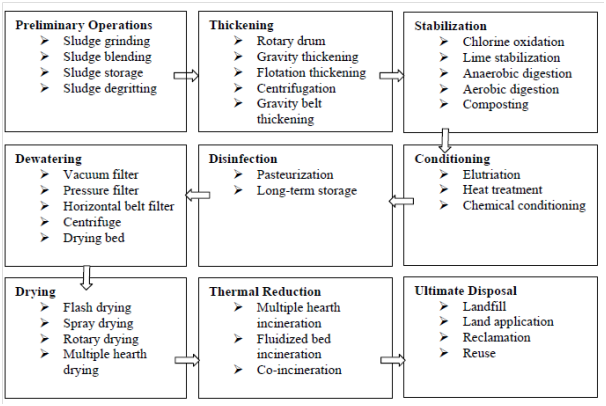Sludge Treatment And Disposal
Sewage sludge consists of the organic and inorganic solids that were present in the raw waste and were removed in the primary clarifier, in addition to organic solids generated in secondary/biological treatment and removed in the secondary clarifier or in a separate thickening process. The generated sludge is usually in the form of a liquid or semisolid, containing 0.25 to 12% solids by weight, depending on the treatment operations and processes used. Sludge handling, treatment and disposal are complex, owing to the offensive constituents present, which vary with the source of wastewater and the treatment processes applied. Sludge is treated by means of a variety of processes that can be used in various combinations.
A generalized flow diagram showing the various unit sludge treatment operations and processes currently in use is presented in Figure 1. Thickening, conditioning, dewatering and drying are primarily used to remove moisture from sludge, while digestion, composting, incineration, wet-air oxidation and vertical tube reactors are used to treat or stabilize the organic material in the sludge. This section examines various sludge treatment processes with emphasis on the most commonly used technologies.

Figure 1: Flow Diagram Showing the Various Unit Sludge Treatment Operations